#Taipei modern art museum
Text

Gerhard Richter, Abstraktes Bild, 1987. Oil on canvas, in 2 parts, each 102 3/8 x 78 7/8 in.
Total overall dimensions 102 3/8 in. x 157 3/4 in.
NEW YORK, NY.- Phillips presented the star lot of the fall auction season – Gerhard Richter’s exceptional Abstraktes Bild. Painted in 1987 and comprised of two large-scale panels, the work is over thirteen feet wide and nearly nine feet tall, making this one of the largest works from Richter’s oeuvre to ever be offered at auction. Following a tour to Taipei and Hong Kong, the monumental painting will be exhibited in New York in the lead up to the Evening Sale of 20th Century & Contemporary Art, where it will be offered with an estimate available upon request.
Jeremiah Evarts, Deputy Chairman, Americas, Senior International Specialist, 20th Century & Contemporary Art, said, “A towering example from the most significant body of work in Richter’s career to date, we are honored to present Abstraktes Bild as the cornerstone of our fall auction season. Bearing extraordinary exhibition history, the significance of this painting’s place in the artist’s oeuvre cannot be overstated. The work was first exhibited at Durand-Dessert, Paris in 1988. A decade later, it was shown at the prestigious Carnegie International, a sign of the work’s enduring ability to represent Richter’s artistic output of the 1980s, arguably the most important decade of his career. With the market for similar paintings by Richter from this period finding homes in some of the most prestigious collections across the globe, we look forward to presenting this remarkable work to Phillips’ community of collectors.”
Abstraktes Bild displays Richter’s virtuosity in abstraction and his inimitable talent as a colorist. With Richter’s unique use of the squeegee, a tool he began using for abstract work just one year prior, the artwork captures the movement of the artist's body through the painting process. Painted shortly after the artist moved away from his figurative, photo-based painting, Abstraktes Bild reveals the explosive power, depth of color, and emotional resonance that would distinguish Richter as one of the most profound abstract painters of his generation.
Besides the present work, there is only one other Abstraktes Bild created in 1987, of similarly epic scale, which resides in the Museu Coleção Berardo, Lisbon. Similar Abstrakte Bilder from 1986 to 1989 – Richter’s most desirable period – populate esteemed public and private collections around the world, including those of The San Francisco Museum of Modern Art; Ergo Versicherungsgruppe AG, Düsseldorf; Instituto do Patrimônio Histórico e Artístico Nacional, São Paulo; Carré d’Art, Nîmes; Landesbank Baden-Württemberg, Stuttgart; the Montreal Museum of Fine Arts; and the Saint Louis Art Museum, which owns the iconic November, Dezember, Januar paintings of 1989.
Courtesy Alain Truong
13 notes
·
View notes
Text
This is How I Say Goodbye | stucky au
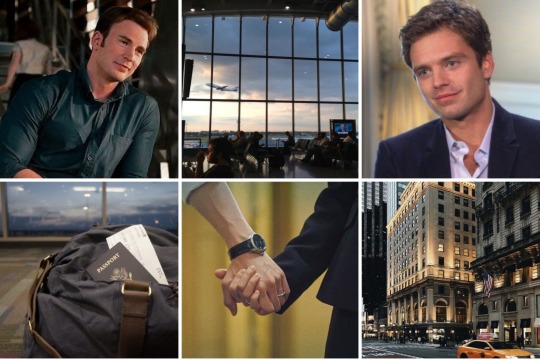
summary: modern stucky au where bucky and steve is a married couple. steve is an art lecturer who travels regularly for work, and this is like bucky's sweet yet bitter farewell for steve in the airport. it’s written in bucky’s pov:)
warnings: nothing, just fluff and romance
author’s note: idk how fic on tumblr works, but this is my first writing of stucky, so pardon all the imperfections🤧

THE night before your flight to Boston, I pack some of your clothes because I see how you're already fast asleep and haven't emptied your suitcase from your last trip. I wake you up at the crack of dawn by softly nudging your arm under the blanket and kissing your cheek. When you take a hot bath, I put my hand on the other side of the bed, and feel the warmth your body has left. By the time you finish bathing, I already prepare your favourite breakfast and put it on the dining table with a hot tea ready on the side. We sit across each other, and I listen to you talking about your research, classes, issues from your respective department, and plans for our trip.
"How about we go to Musee d’Orsay next month?" You say. "Where is it?" I say. "Paris," you replied. "Oh, I've never been to Paris." My eyes widen. "But... that's so far. You think you have time for that?" I look into his blue eyes. "Don't worry, I've scheduled most of my lectures on Friday. So, I'm all yours next month." He reaches my hand to hold it. A small relief in my chest. "It’s a beautiful art museum. I think you would love Monet and Renoir." He smiles. I smile back and nod in approval. I have never heard of Monet and Renoir. And truthfully, I don't even understand art – though I wish I do. I just love absorbing the beauty in your voice. How it speaks to me about shades, shapes, lines, tints, colors, brush strokes, hues, and shadows of a painting. Those deeper meanings which my eyes can't see, but only yours can.
The next thing I know is, we sit side by side on the backseat of a yellow cab. It is raining in Brooklyn – the car horns around us are blaring madly, and still, after 20 minutes later, the traffic doesn't move. I watch you slowly closing your eyes, taking a short nap on my shoulder, and relaxing your muscles. I fix my gaze upon your face, too busy adoring the shape of your nose, lips, jawline, and cheekbones. I want to slow things down, if I could, and feel the gentle weight of your upper body leaning onto me for the next morning. But I know it's impossible.
Upon our arrival, we order two cups of coffee, walk towards the terminal, and sit with our legs tangled on your big suitcase.
Often, in the airports, I used to look at people passing me by and think, it must be such a lonely and melancholic job: to cast farewell upon others and to separate their hearts by a distance. I can’t imagine, what if I were the one who had to do such thing every single day? Or every week, or every month? That must be pretty awful. But isn’t it funny how life teasing you in a humorous way, leading you to a certain person, and surprising you in ways that you've never expected? Because right here, and right now, I am one of those people in the airports after marrying you.
Finally, when your boarding anouncement comes up, I notice that guilt look on your face – the one that I've familiarized myself with everytime we have to separate our ways. I squeeze your hand and smile to assure you that I will be alright. I know you will always send me gifts, letters or postcards from faraway places when you travel; foreign cities that I've never stepped myself into – from Taipei, Munich, Tokyo, Kyiv, Jakarta, you name it. Sometimes they will reach me in a week or two. Other times, in random timings and intervals; i have no idea which delivery service provider you are using. But I love them so much, and I store them safely in a box like a family trinket, or a rare, shiny jewelry from a vintage shop. I know it's not so much to fill in your absence at home, but it makes me feel as if you're near with me.
"I'll miss you," you say, as you kiss my forehead and hug me tight. Somehow, that makes my lips curve in a small smile. Even though I've heard those words like a million times, I know I'll never get tired of hearing it from you. Just because it sounds right. Because it means you'll keep me in your thoughts. Because we both know that each word carries the same weight, meaning, and importance for both of us.
"Listen, I put an extra pair of socks in your case. The black ones. And um, what's that thing for your asthma? Nebu... Nebulizer. The Pulse Ox is in your medication kit. I also put your umbrella in your carry-on, since you know, you always forget to bring your umbrella. And-"
"Buck."
"I think your inhaler is in, uh..." I close my eyes to think.
"James Buchanan Barnes."
"Yeah? Sorry. Come again?"
We stood in silence for a moment, before a small laugh tumbles out of you. I tilt my head in confusion, but you just start brushing my cheek and smile warmly at me.
"Thank you for packing them, sweetheart. But aren't you supposed to say 'I'll miss you too, Steve’?”
I look at him and feel my cheeks growing hot, then suddenly, we found ourselves giggling at each other.
"I gotta go, Bucky."
"Mhmm, I know. Please be careful."
You kiss my forehead again, and slowly, I watch your broad back turning and walking away from me. My heart begins to ache as your figure is getting smaller, and smaller before completely turning into a chaotic blur. I can feel the emptiness enveloped me from all corners of the airport room. I know this day will always come - you, hopping to another airplane, meanwhile I, having to ditch my sadness as I slip to another day. So here, I promise myself that everything is going to be okay. It has to be.
On my way back home, sitting in a cab alone, I was looking at the skyscrapers and tiny rain droplets on the window, when suddenly, I receive a text from you.
Steve: Hey, just want to let you know that I miss you already! And the next rainy season, when I'm in Brooklyn, I'll make sure to kiss you upside-down. Spiderman-style :)
I chuckled to that and feel something inside me softening. A happy tear escapes from the corner of my eye, rolling down on my cheek. I realize that even though the downpour hasn't stopped, and the gray clouds are floating freely above me, I can feel the world is showering me with glittering pixie dust.
#look who finally tries to write?😆#yep it’s me#so I wrote this during my working flight trip and finished it in my hotel room#and though idk if this pov ever been tried on tumblr fics I really enjoyed writing it:)#i always wonder what it feels like to be the one who’s waiting while the other travel away#there’s something sad yet sweet about it sometimes#i hope you like it!!💕#steve rogers#bucky barnes#stucky fic#modern au#stevebucky fic#steve x bucky#aya writes#steve rogers x bucky barnes
13 notes
·
View notes
Text
Ayano Sudo (14th October 1986–) was a Japanese contemporary artist and photographer known for her disguised self- portraits, and photographic works of various kinds.
She graduated from Kyoto City University of Arts and Music with M.A. in 2011.
Profiles
She was born in Osaka pref., Japan in 1986, and spent her middle and high school days in Ashiya city, Hyogo pref., Osaka’s neighboring city with population of more or less 100,000.
She graduated from Akashi Prefectural High School art class in 2005.
In 2009 she went to France to study painting and conceptual art in the exchange student program at Ecole des Beaux-Arts (School of Fine Arts), Paris.
After the study in France, she came back to Japan, and finished the conceptual design course to graduate from Kyoto City University of Art and Music with M.A. in 2011.
At present she lives in Tokyo.
She captures the desire for transformation and ideal images that transcend the gender of the subject in photographs, and presents flat works that appear to be between the color manuscripts of shojo manga (少女漫画) or girls’ comics ( Japanese comics) and photographs. One of the features of the work is that the actual work is printed on photographic paper with its own texture, decorated with rhinestones and glitter, etc., thus making her finished works uniquely glitter under lights.
While in Kyoto City Art University, she was awarded Yasumasa Morimura (森村泰昌, a Japanese appropriation artist)Award in MIO Photo Encouragement Award 2010 in Osaka, Japan.
Since then, she energetically presented her works overseas and held her first solo exhibition at 1839 Modern Art Gallery (1839當代藝廊) in Taipei, Taiwan in October of the same year.
2014, she received the Grand Prize of Canon New Cosmos of Photography Contest (写真新世紀Shashin Shinseiki; a photo contest sponsored by Canon Company, one of the two big photo contests in Japan open public for young future photographers)for the series “幻想(Illusion) Gespenster” featuring herself dressed to missing girls who had really existed. A collection of works with the same title has been published by HOLOHOLO BOOKS in France.
As an artist she has energetically been working on exhibiting her works in various exhibitions and art fairs in Japan and overseas. Also, her varieties of photographic works have been appeared in books and magazines in Japanese and overseas markets as well.
Her works are stored in the George Eastman House International Museum of Photography, New York, USA and the Tokyo Photographic Art Museum (東京都写真美術館, Tokyo-to Shashin Bijutsukan ), Tokyo.
Major solo exhibitions include “Omokage (面影)-Autoscopy” (at Hillside Forum, Tokyo, 2015) and “Ayano Sudo Photo Exhibition Anima / Animus -featuring to introduce Kuniyoshi Kaneko’s Room-” (at Ginza Mitsukoshi 7th Floor Gallery, Tokyo, 2018).
Major group exhibitions include “ I know something about love; About Love Asian Contemporary” (at Tokyo Photographic Art Museum (TOP), 2018), “Photo City Exhibition” (21_21 DESIGN SIGHT, Tokyo City Photographic Exhibition held at TOP, Tokyo, Japan, 2018), “Internet of (No) Thing: Ubiquitous Networking and Artistic Intervention” (at Jogjakarta National Museum, 2018), “SELF / OTHERS”, a dual photo exhibition, (at Canon Gallery S, Tokyo, 2018), etc.
Her main works include “Metamorphose” (2011-), which depicts herself and her friends disguised as an ideal figure regardless of gender, and “Gespenster (幻影、illusion)”, a self-portrait taken as a real missing girl. 2013-14), “Omokage(面影), Autoscopy” (2015) with the motif of such phenomenon as oneselves looking like totally different persons (2015), and among others .
Since 2020, Ayano Sudo has released the art magazine “The peppermint magazine (薄荷) ”, which is created by collaborating with other artists in each issue.
Episodes behind the works
■ In an interview, Sudo told that she finds beauty in beings that sway in all boundaries born in society, such as gender, generation, and races, and also does she find beauty in danger that even life and death are sometimes vague, and Sudo shoots a series of works that do not exist in this world. She says that the feeling of strangeness that she feels in reality is regarded as an " uncanny valley " and she has a desire to overcome it .
■ One of Sudo’s distinctive works is a work that uses a self-portrait technique. Sudo, who strongly believed that she had been a boy since the childhood, and got dressed like a boy. However, when he became a junior high school student, he began to wear Lolita fashion, which was popular among young girls at the time. One of the reasons for this was her strong desire that she wanted to be liked by the admirable ideal senior boy student she had met in her school.
Due to this discomfort with gender from an early age, Sudo’s desire to transform has sprung up, and she has taken a self-portrait in a costume and made it into a work. Sudo says that the series of early works (2011, 2013, 2018) was an act of searching for her own sexual identity, she told in the interview.
In her subsequent productions, Illusion or Gespenster ((幻影)、2013-2014) and MY POSTMORTEM (2018), Sudo pursues the relationship between her body and her identity.
“Illusion(幻影)/Gespenster”
“Illusion” (2013-2014) is a self-portrait book of photography created in her twenties from her experience to come across with a notice put on the wall of a railroad station about missing girls whose whereabout unknown for more than twenty years and that’s why and how she began to get dressed like the girls on the poster.
It consists of 21 self-portraits and a few snapshots. Sudo says that, with respect to the series of this work, she couldn’t think of anything else but a self-portrait which could be realized by superimposing the emotions of herself over the emotion of the missing girls that those girls might have at that time.
The production process begins, at first, with making a list of missing girls
and doing in-depth research of every each of the girls’ profiles. Then, she searches for second-hand apparel shops to find similar clothes the girls in the poster wore at the time of missing, and then shoots in the place nearby her house.
When the print is completed, the finished printing paper further is sprinkled
with glitter like lame, and other glittering objects.
She feels an unspeakable sense of fear toward the girls who have gone to a mysterious world, and at the same time, another thought struck her. That is, they may now live in a land they don’t know, or they may have become corpses somewhere they don’t know. However, the girls on the list will be separated from the timeline of the world when they disappeared, will not grow old, and will remain intact for ever.
Sudo has a longing and strong consciousness for “being a girl” in her body and spirit, which is moving away from the girl every moment, and feels a certain kind of “sacredness” in them, and their existence again. With the above event in mind, she began trying to confirm the missing girls’ existence once again and present it in front of people .
In an interview with the New York Times , Sudo said the title of the photobook Gespenster, meaning illusion or ghost in German, was inspired by the novel “Sasameyuki.” or “Makioka Sisters” written by Junichiro Tanizaki, a famous Japanese novelist.
■ “Teriha no Ibara/照葉野茨 ( a memorial rose)”
“Teriha no ibara” is a new series of her self-portrait photographic work, the motif of which came from “Makioka sisters” appearing in the novel “Sasame Yuki/細雪 (Light snow falls)”, one of Junichiro Tanizaki’s masterpieces.
In the series of the work, photos of the house of Ashiya (an old house resided by Saika Tomita, a well-known Japanese poet) and Tanizaki’s beloved furniture also are included. Also, she appears wearing her grand-mother’s Kimono and various accessories.
Sudo’s grand-mother was a traditional Japanese teahouse owner succeeding the business in 1945 from her father, a founder of the teahouse under the name of Ogawaya founded in 1910.
She reopened the teahouse together with her mother which was destroyed by an air bombing in the last war to become officially the owner of the teahouse in 1945, and opened a geisha house of Ogawaya at Shinmachi, Osaka.
Since 1950’s, the geisha house had been made use of by many Kansai celebrities for entertaining their guests, such as well-known Rakugo tellers like Beicho Ktasura and Kobeicho Katsura, famous comedians Kon Omura and Itoshi &Koishi Yumeji, and Kabuki players, such as Ganjiro Nakamura, Tojuro Sakata, etc.
This Geisha house now is deemed the last and only traditional house available in Semba and Shinmachi districts, Osaka.
Ayano Sudo has made her own experiences vitalized in creating her original artistic and photographic works, learning from the Tanaizaki’s novel “Makioka Sisters”, and getting motif from the women of modern time, i.e. the women of the time when Hanshin Modernism was born and grown in Osaka and Kobe areas in Taisho and early Showa Eras.
She has always been making which ever happens to her be the subjects for her own photography.
1 note
·
View note
Text
youtube
Taiwan is a vibrant island nation known for its rich history, diverse landscapes, delicious cuisine, and technological innovation. Here's a guide to help you plan your visit to Taiwan:
1. Taipei:
Taipei 101: Once the world's tallest building, offering panoramic views of the city.
National Palace Museum: Home to a vast collection of Chinese art and artifacts.
Chiang Kai-shek Memorial Hall: A symbol of Taiwan's history and democracy.
Shilin Night Market: Experience Taipei's street food culture and try local delicacies.
2. Taroko Gorge:
Explore the stunning Taroko National Park, known for its marble cliffs, deep gorges, and hiking trails.
3. Sun Moon Lake:
Relax at this picturesque lake surrounded by lush greenery, pagodas, and temples.
4. Jiufen Old Street:
Wander through the narrow streets of Jiufen, a historic mining town with tea houses and beautiful views.
5. Alishan National Scenic Area:
Famous for its sunrise views, ancient cypress trees, and mountain railways.
6. Kenting National Park:
Enjoy beautiful beaches, coral reefs, and vibrant marine life in this southern national park.
7. Tainan:
Taiwan's oldest city with a rich history, temples, and traditional street food.
Chihkan Tower: An ancient Dutch fort with historical significance.
8. Taichung:
Rainbow Village: Colorful, vibrant artwork adorns the buildings.
Fengjia Night Market: One of the largest night markets in Taiwan.
9. Hualien:
Gateway to Taroko Gorge and a charming coastal city with a relaxed atmosphere.
10. Yehliu Geopark:
Marvel at unique rock formations along the coast, including the iconic Queen's Head.
11. Traditional Festivals:
Experience traditional festivals such as Lantern Festival, Dragon Boat Festival, and Mid-Autumn Festival if your visit coincides with them.
12. Hot Springs in Beitou:
Relax in natural hot springs in the Beitou district near Taipei.
13. Night Markets:
Explore various night markets, such as Raohe, Shida, and Shilin, to sample a wide array of Taiwanese street food.
14. Taiwan's Islands:
Consider visiting outlying islands like Penghu or Kinmen for a different cultural experience.
15. Cultural Etiquette:
Respect local customs and traditions, such as removing shoes when entering someone's home or a temple.
Tips:
Transportation: Taiwan has an efficient and well-connected transportation system, including high-speed trains and an extensive bus network.
Language: Mandarin Chinese is the official language, but English is commonly spoken in urban areas.
Currency: The New Taiwan Dollar (TWD) is the official currency.
Weather: Taiwan experiences a subtropical climate, so be prepared for both rain and sunshine, depending on the season.
Remember to check for any travel advisories and entry requirements before planning your trip. Taiwan's diverse offerings cater to nature lovers, food enthusiasts, history buffs, and those seeking modern city experiences. Enjoy your time exploring this fascinating island!
#taiwan#TaiwanTravel#TaiwanVibes#TaiwanAdventures#ExploreTaiwan#TaiwanTrip#TaiwanBeauty#TaiwaneseCulture#TaiwanDiversity#TaiwanFoodie#TaipeiCity#TaiwanNature#TaiwaneseLifestyle#TaiwaneseHistory#TaiwanViews#TaiwanPhotography#TaiwanLove#TaiwaneseTraditions#TaiwanLandmarks#TaiwanIslandLife#TaiwanSights#Youtube
0 notes
Text
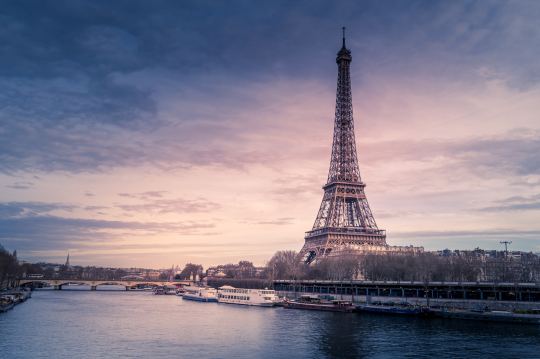
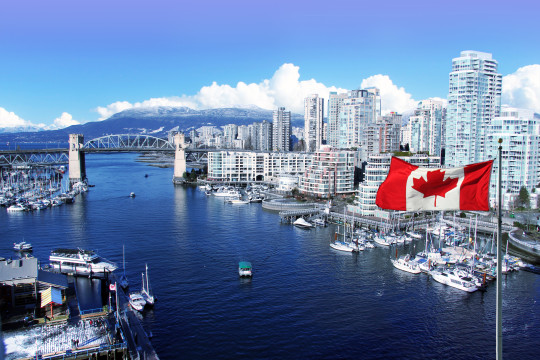




Hold Fast To Your Dreams Like Migratory Birds—My 6 ‘Second Homes’ Are Visas To Experience 6 City Lands: Will You Follow Me?
We need a place where we can escape for relaxation. Life is short and the world is big. One-week vacations are too short. By the time you relax enough not to worry about work, the week is up. I long to stay idly in a loved city for months. Ideally, it will be a kind of my second home, but it will not be my real home—my home is Hong Kong. I want a third home, fourth home, fifth home…I always fancy a home wherever I have been to. Sadly, eyes are bigger than my pockets.
In a foreign city, there is always something new to discover. One can wander in the streets without a plan. I enjoy getting lost in the city because I love the anxiety of feeling safely helpless. When I have breakfast at a cozy café, buy some untried snacks in a supermarket, visit an endearing museum and read amazing books in a bookstore, I feel like making a movie in a strange place about myself, the lost me—by myself.
Merciless years have done harshly to me. I will face the reality of getting old. Youth was wasted on the money-making chores. Today, I can be myself; and unreservedly do the things that I want to do. I want to fly, like migratory birds that will fly hundreds and thousands of miles to find the best ecological conditions. A person needs just 3 things to be truly happy in this world: some places to love, some places to do and some places to remember.
If I can afford, I desire 6 ‘breakaway city retreats’ every year, each one ideally for one to two months. A married couple told me, “We planned to have a breakaway stay in London for one year after our retirement. It ends up that we stayed there for two years—still not feeling enough.”
The 6 cities that I dream to stay are Tokyo, Qingdao, Vancouver, Bangkok, Taipei and Paris. It may be just a dream but we must have a dream before our dream can come true.
Paris has a rich human history, being over 2,000 years old. Her cobblestone lanes, grand boulevards and charming cafes all provide a honeyed experience for me. Her glamorous fashion scene, apart from arts and culture, is the most enduring appeal of this ancient city of the world.
Taipei is a city of culture. Culture makes the people polite and peaceful. There, bookstores, coffee shops and ‘creative parks’ are common. In Taipei, slow living is the popular motto of taking life at a slower pace and savoring the quiet moments that make up our good life. If you feel bogged down by everyday stressors in Hong Kong, do fly for about an hour to Taipei for a retreat full of spiritual contentment.
I kiss Bangkok for her vibrant activities, delicious street food, bustling nightlife, world famous open-air markets and relaxing Thai massage. The welcoming and colourful atmosphere of this religious city is too hard to resist. The extreme opposite of her disorderliness is the majestic faith of people in Buddhism. Sawadee Krub!
Vancouver has a spectacular backdrop—the snowcapped Rocky Mountains. She always ranks as one of the world’s most livable cities. I delight in the city’s stunning natural scenery, surrounded by mountains, forests and the blue Pacific Ocean, making her the very very picturesque international city. We can do hiking in the mountains, kayaking in the ocean and strolling in the treeful parks scattered throughout the city. After a day of fun and happiness, one can escape to the biggest ‘China Town’ Richmond in the world for scrumptious food. No wonder why Richmond is called the ‘Little Hong Kong’. I got an apartment near Richmond Centre.
Qingdao, near Korea, in China (青島) is a seaport, naval base, and a business centre. The city is a showcase of very traditional and extremely modern Chinese architectures. She has one of the most beautiful coastlines in the country. The local cuisine, between the northern cooking and southern food of China, is marvellous. The city is famous for her tasty seafood and internationally renowned Tsingtao Beer. Beer has been an impressive heritage of Qingdao because of the German influence. She was leased to Germany as a colony in 1898. Japanese started to occupy Qingdao in 1914. The city, full of old German and Japanese buildings, was returned to China in 1922. Traces of the German and Japanese colonial periods can be found everywhere. This explains why the city has many huge Sakura (櫻花) parks. My heart belongs to this romantic city. If you are hungry for a dramatic and contrasting mood, this is what Qingdao is all about. The place offers the Orient and the West; as well as the old and the new. I also miss people-watching there because her people are mostly tall, well-dressed and have fair skin with a velvety and smooth texture. Quite a number of movie stars are from Qingdao.
Oh, Tokyo, my Tokyo! Tokyo means diversity and velocity. She offers an unlimited choice of shopping, entertainment, culture and dinning to her visitors. The city’s old history can be appreciated in traditional districts such as Asakusa (淺草) through her archaic temples, wooden houses and gardens. There are ultra-modern malls, hotels and theatres in trendy districts such as Shibuya (澀谷) which are right next to the olden areas. Tokyo is a magnet for changes and there are more changes taking place in the city than anywhere in the world. Things in Tokyo around me evolve so fast that she always makes my head spin. Staying in Tokyo is surely a kaleidoscopic experience.
Life is short and at my age, I am learning to enjoy it to the fullest. One way is ‘work hard, play hard’. The other way is to travel more so that I can see modestly what a tiny place that I occupy in the world. This is why I wish to short-stay in more places like the 6 cities that I have alluded to. “Unfinished business is like an open wound that never heals.” My life is usually a long succession of busy nothings. I long for solitude, the kind of quietness in a foreign city, which can open myself for a deeper intimacy with myself.
Maurice Lee
Chinese Version 中文版: https://www.patreon.com/posts/si-hai-wei-jia-96723481?utm_medium=clipboard_copy&utm_source=copyLink&utm_campaign=postshare_creator&utm_content=join_link
Song “Free as the Wind”
youtube
Acknowledgement-CB26
Paris Christmas Eve
youtube
Acknowledgement – A walk in Paris
Tokyo Walk
youtube
Acknowledgement-HP Walking Tours
Qingdao
youtube
Acknowledgement – KimberleyExploring
0 notes
Text
Contemporary Filipino artist Ronald Ventura ranks among the leading figures of Southeast Asian art. His paintings and sculptures amalgamate symbols of and references to the forces and influences that have shaped Filipino history. By layering visual imagery from the United States, Spain, Japan and other occupying powers alongside that of indigenous cultures, Ventura explores the complex nature of Filipino Identity in the 21st century in both a celebration and in painful memory. His tiers of references present a complex visual language of graffiti, hyperrealism, cartoonish forms and fantasy through an accessible and sophisticated vision.
"RONALD VENTURA' s BIOGRAPHY "
Born in Manila in 1973, Ventura completed his BFA at the University of Santo Tomas, where he continued to work as an instructor after graduating. He evolved his painting and sculpture through a highly editorial eye and a wide breadth of knowledge in Eastern and Western art history, political strife and the psychological history of his homeland. His works weave together references to Old Master paintings, Japanese prints, tattoo aesthetics and American cartoons to access a surreal cultural, national and religious Filipino identity. The young artist has received impressive accolades for his work since the late 1990s, including the 2001 Artist of the Year prize from Art Manilla and the 2005 Ateneo Art Gallery Studio Residency Grant in Sydney, Australia.
His first American solo exhibition, Metaphysics of Skin at Tyler Rollins Fine Art in 2009, garnered critical praise, as did Project: Finding Home at the Museum of Contemporary Art in Taipei in 2016. He participated in the Prague Biennale in 2009 and in the Nanjing Biennial the following year; in addition, he has had exhibitions at the Museo delle Culture in Lugano, Switzerland, the Institut Valencià d’Art Modern in Valencia, Spain and the ICA Gallery in Singapore. Ventura is the highest selling artist from Southeast Asia; his Grayground Painting sold at Sotheby’s 2011 Contemporary Southeast Asian Painting auction in Hong Kong for 8,420,000 HKD ($1,082,223).

0 notes
Text
Opinion Art and Nature
JOHN-PAUL STONARD
Art can only ever express the distance between humans and the natural world
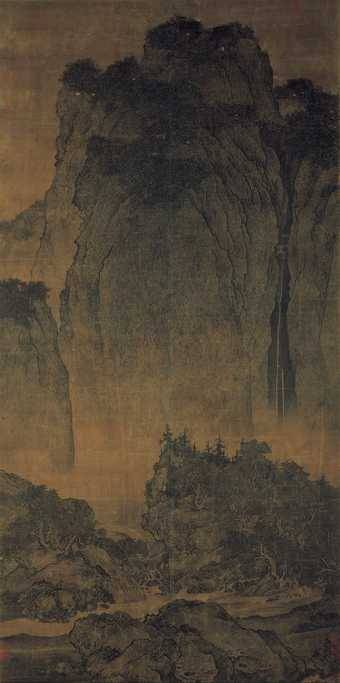
Fan Kuan, Travellers among Mountains and Streams c.1000, ink on silk hanging scroll, 206.3 x 103.3 cm
The Collection of National Palace Museum, Taipei
Picasso was right. No matter how naturalistic a work of art, it is always more about art than nature. Works of art show our sense of being apart from the natural world, our stubborn sense of difference from other animals and the the universe in which we find ourselves.
Landscape paintings made in China around the 900s are among the first great poetic statements of this sense of apartness. Fan Kuan’s hanging- scroll painting Travellers among Mountains and Streams, the most famous of this school, shows the ‘unendurable contrast’, as the poet and translator Arthur Waley put it, between the human and natural worlds. Vast cliffs swamp the human world, tiny figures lost in the ink-drawn landscape.
It was an idea taken up in European art many centuries later – a sense that nature was beyond human control. I love James Ward’s great, glowering painting Gordale Scar 1812–14, in Tate’s collection, but it does nothing to rid you of your deep sense of fear when actually approaching the towering cliffs in the Yorkshire Dales, or to calm your racing heart when scrambling up the dangerous limestone cleft, an ascent both terrifying and impossible to resist. Only at the top, lying exhausted out on the quiet, windswept plateau, is it possible to think of Ward’s painting once again.
Art is constantly driven by the attempt to bridge the apartness of humans and the world. It always fails. In the 20th century, this pursuit became a matter of finding an equivalent not for the appearance, but for the invisible forces of nature. How might you show processes of growth, decay or gravity in art? These are just as much ‘nature’ as a tree in the field. ‘Art imitates nature in her manner of operation’, in the words of the art historian Ananda Coomaraswamy in his 1934 book The Transformation of Nature in Art. This tradition of thought was brilliantly summarised by Clement Greenberg in his essay from 1961 ‘On the Role of Nature in Modern Painting’. He describes how impressionist artists tried to resolve all conflict between art and nature by bringing painting to the verge of abstraction, but it was for the cubists to realise what this meant: ‘When Braque and Picasso stopped trying to imitate the normal appearance of a wineglass and tried instead to approximate, by analogy, the way nature opposed verticals in general to horizontals in general – at this point art caught up with a new conception and feeling of reality that was already emerging in general sensibility as well as in science’. Perhaps this was when Picasso first conceived his ‘not nature’ definition of art.
Ward’s Gordale Scar now seems prophetic of how this feeling of reality has become, in our own times, so dark and dangerous. John Ruskin was among the first to realise that man had ‘desacrilised’ nature, as he put it, viewing it as a source of raw materials to be exploited, emptying it of its mystery. It is no longer simply a feeling of apartness, but also a sense that we own and control nature. But art shows us that we do not. We have laboratories where we recreate the birth of stars. Art is a record of our changing encounter with nature, and reveals the truth that our sense of separation is mere illusion — we are a tiny part of a greater whole. Art ‘cannot stand in competition with nature’, Hegel once wrote, ‘and if it tries it looks like a worm trying to crawl after an elephant’.
John-Paul Stonard is a writer and art historian. He is currently writing a book telling the story of art, from Palaeolithic to the present day, for Bloomsbury.
0 notes
Photo

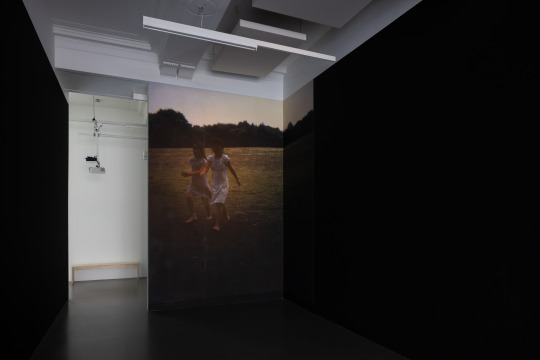
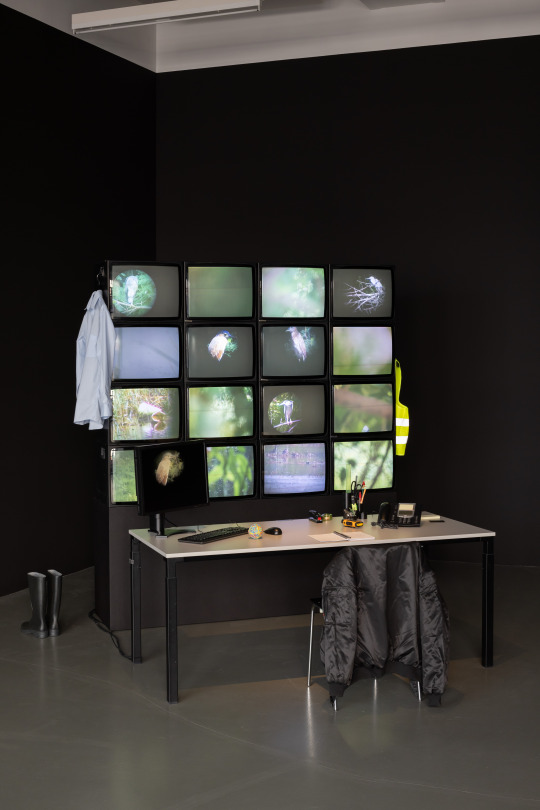
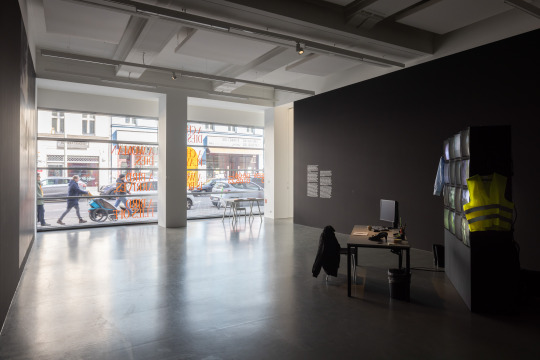

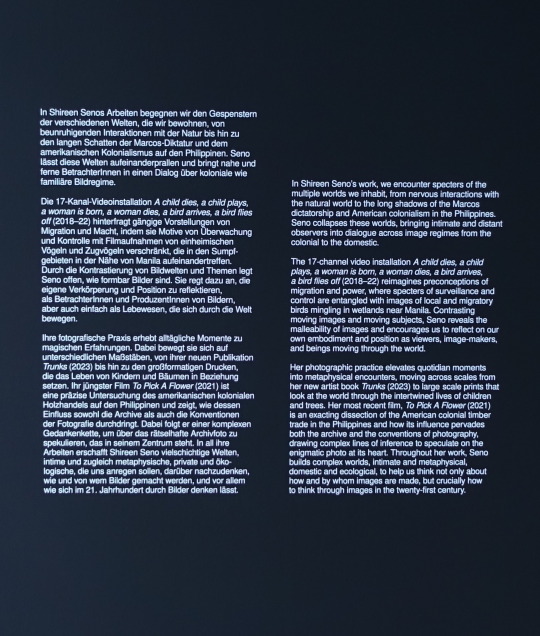

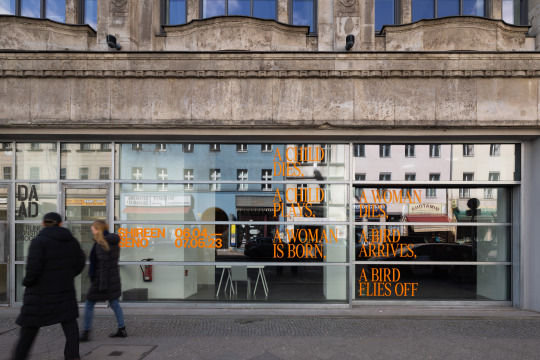
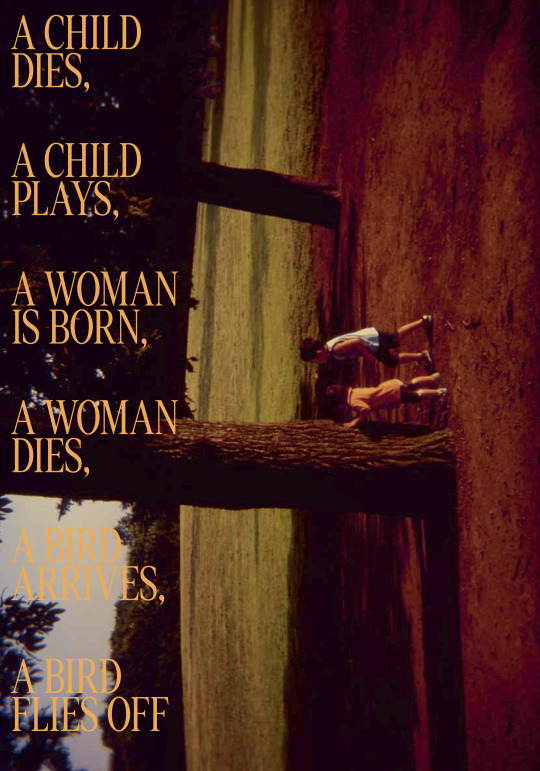

Shireen Seno: A child dies, a child plays, a woman is born, a woman dies, a bird arrives, a bird flies off
Solo exhibition at daadgalerie, Berlin
April 5-May 7, 2023
Opening: Wednesday, April 5, 7pm
Artist Talk with Shireen Seno and George Clark
Thursday, April 13, 7pm
Screening: Big Boy (2012) by Shireen Seno
Thursday, April 20, 7pm
Screening: Years When I Was a Child Outside (2008) by John Torres
Artist Talk with John Torres
Filmmaker and artist Shireen Seno’s work explores relationships in all their complexity and intricacies: within the family, to political relationships, to media and technology, between different species and ecosystems. Through a politics of attention and remarkable sensitivity, Seno creates a space for repressed narratives, often set against the backdrop of Philippine colonial history and diaspora life. In doing so, her practice takes her to archives as well as to Candaba, a wetland near Manila where migratory birds settle halfway along the East Asian–Australasian Flyway. She encounters the world with a keen awareness of the malleability of images and a deep distrust of overly linear narratives. Shireen Seno’s first solo exhibition in Europe brings together works from the last four years: the 17-channel video installation A child dies, a child plays…, the film essay To Pick a Flower, new photographs and a sequel to her image essay Trunks.
Shireen Seno’s body of work touches on an array of interconnected activity from feature films to multi- screen installations, passing through collective practice, site-specific installations, photographic enquiries, and curatorial excavations. Her work addresses memory, history, and image-making, often in relation to the idea of home.
A recipient of the 2018 Thirteen Artists Award from the Cultural Center of the Philippines, she is known for her films Big Boy (2012) and Nervous Translation (2017) which have won awards at Rotterdam, Punto de Vista, Shanghai, Olhar de Cinema, Vladivostok, and Lima Independiente and have screened at New Directors/New Films at Film Society of Lincoln Center and MoMA, New York; Yebisu International Festival of Art & Alternative Visions, Tokyo; Rencontres Internationales, Paris/Berlin; Tate Modern, London; UCCA Center for Contemporary Art, Beijing; NTU Center for Contemporary Art, Singapore; Portikus, Frankfurt; Taipei National Center for Photography and Images, Taipei, Museum of the Moving Image, New York; National Museum of Modern and Contemporary Art (MMCA), Seoul; Museum of Contemporary Art & Design Manila; MAIIAM Contemporary Art Museum, Chiang Mai; and M+, Hong Kong, among others.
Together with artist and filmmaker John Torres, Shireen Seno runs Los Otros, a critically acclaimed film and video studio and platform committed to the intersections of film and art, with a focus on process over product. In 2019, Seno and Torres realised the exhibition Cloudy with a Chance of Coconuts at Portikus, Frankfurt am Main. Shireen Seno is currently a film fellow of the DAAD Artists-in-Berlin program.
Photo documentation (exhibition views and façade daadgalerie): Thomas Bruns
1 note
·
View note
Text
Taipei

Taipei, the capital of Taiwan, is a bustling metropolis that offers an incredible mix of traditional and modern culture. The city is full of skyscrapers, night markets, temples, hot springs, and stunning natural scenery. It’s a great place to explore if you’re looking for an unforgettable travel experience.
History and Culture
Taipei has a rich cultural and historical background that’s influenced by the various ethnic groups that have inhabited the island over the centuries. It was founded in the early 18th century and was originally known as Taipei City, which means “north of Taiwan”. The city has been shaped by its history and its architecture reflects this with buildings that mix traditional Chinese and Japanese styles with modern designs.
The National Palace Museum is a must-visit for anyone interested in learning about Taiwanese history and culture. It’s home to over 700,000 artifacts, including calligraphy, paintings, antiques, and other works of art. The museum is one of the most visited cultural attractions in Taiwan and is considered one of the finest museums in the world.
Another important site in Taipei is the Chiang Kai-shek Memorial Hall, which was built in honor of the former President of the Republic of China. The hall is home to his bronze statue, which sits atop a staircase that leads up to the main building. Its white edifice and blue-tiled roof represent the ideals of the government – the roof being blue to represent the people and the white walls representing government officials.
The Taiwanese are known for their love of night markets and Taipei has plenty of them to explore. The most famous night market in the city is the Shilin Night Market, which features hundreds of food stalls, shops, and vendors selling everything from street food to traditional Taiwanese handicrafts.
Nature and Adventure
Taipei is known for its beautiful natural scenery, and there are many places to explore outside the city. One of the most popular destinations is Yangmingshan National Park, which offers stunning views of volcanic mountains, hot springs, and hiking trails that lead to breathtaking views.
Beitou is another popular destination for nature lovers, featuring hot springs and thermal baths that are powered by geothermal energy. The area has several public hot springs and offers incredible panoramic views of the city.
Food
Taipei is a food lover’s paradise, with a wide variety of cuisines to choose from. The city is famous for its street food, which can be found at the many night markets throughout Taipei.
Some of the most popular Taiwanese dishes include beef noodle soup, braised pork rice, and stinky tofu. If you’re feeling adventurous, you can also try some of their more exotic offerings, like chicken feet or pig’s blood cake.
If you’re looking for a fine dining experience, Taipei has plenty of options as well. The city has a number of Michelin-starred restaurants, including RAW, which serves contemporary Taiwanese cuisine.
Shopping
Taipei is a shopper’s paradise, with a number of malls, boutiques, and markets throughout the city. One of the most popular shopping districts is Ximending, which is considered the “Harajuku of Taipei”. This pedestrian-only shopping area features a wide variety of shops, restaurants, and entertainment options.
Another popular shopping destination is Taipei 101, which was once the world’s tallest building. The mall inside Taipei 101 features high-end international brands and luxury goods.
Nightlife
Taipei has a thriving nightlife scene, with plenty of bars, nightclubs, and live music venues to choose from. The city’s main nightlife district is Zhongxiao Dunhua, which is home to a number of trendy bars and clubs.
If you’re looking for live music, you can head to The Wall Live House, which is considered one of the best music venues in the city. It hosts both international and local musicians and has a reputation for being a great place to see emerging artists.
Conclusion
Taipei is an incredible city that offers something for everyone. Whether you’re interested in history, culture, nature, food, shopping, or nightlife, Taipei has it all. The city’s blend of old and new, traditional and modern, makes it a truly unique travel destination that’s well worth a visit.
1 note
·
View note
Text
翻訳、編集、リサーチ|北師美術館
Translation, editing, research at Museum of National Taipei University of Education, Taiwan
- Translated, edited, and proofread Japanese and English texts for exhibitions and catalogs.
- Stayed current with latest Japanese-language idioms and cultural references to allow for hyper-realistic translations for modern publications.
- Transcribed audio recording of interviews with curators and artists.
- Did research on Japanese artists from Meiji period to contemporary era, their art works, and the social and historical backgrounds.
- Assisted in organizing events such as conferences and workshops.
-Support for communication between 14 university museums in Kyoto and MoNTUE.
台湾の北師美術館の展示、「美少女の美術史展」、「京都好博學!-京都‧大學博物館聯盟特展」の企画において、翻訳、編集、リサーチでお手伝いしました
展覧会や 図録で使用する日本語と英語のテキストの翻訳、編集、校正
キュレーターによるアーティストへの取材録音の文字起こし
明治から現代まで少女を表象する日本人アーティストのプロフィールや作品、その社会的・歴史的背景について調査しレポート作成
会議やワークショップ、展示ツアーなど、企画関連イベントのサポートと通訳
14の京都の大学博物館と北師美術館のコミュニケーションのサポート
0 notes
Photo
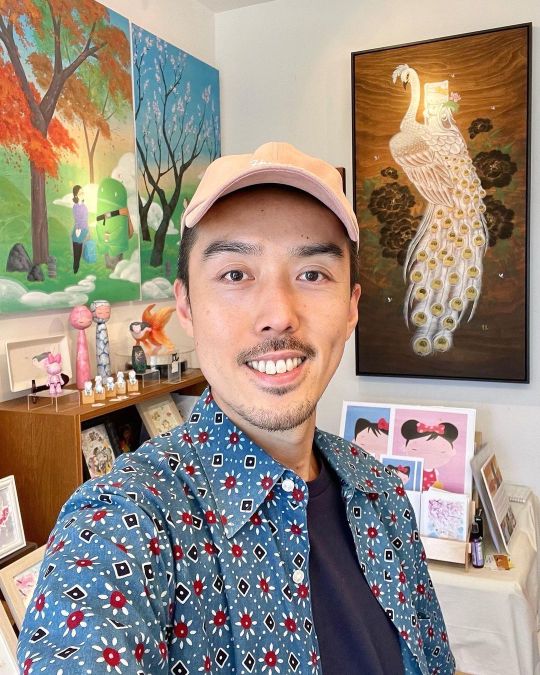
Next up on our Summer Tour we head back to our hometown of San Francisco with @martinhsuart! Martin Hsu is an Asian American artist living and working in San Francisco, CA. He fell in love with drawing at his grandparents' house while growing up in Taiwan. In 1991, Martin moved to the U.S. with his parents due to health reasons that completely changed his life. Martin graduated with a Bachelor of Fine Arts in Animation from California State University in Fullerton, and worked professionally as a character designer for Nickelodeon and Disney TV Animation. Martin learned how to paint by studying works by his favorite artists and by making lots of paintings; he learned what to paint by studying books on Asian history, world mythology, and family photo albums. Martin is a traditionalist making art in the contemporary world. He creates New Traditional Asian Art by fusing modern narrative with eastern sensibility. Works of peony blossoms and goldfish mermaids painted with delicate precision by using calligraphy brush directly onto wood panels, covered in thin layers of metallic gold and silver to resemble imperial silk. Surreal and serene images depicting an infinite universe transcending time and space where tradition blooms and mythology lives. Martin is a naturalist at heart. Half human creatures from myths and legends represent the struggle with our animal nature, that by destroying the natural world, we destroy a part of ourselves. His works glorify our kinship with the planet by humanizing virtual reality and by bringing warmth to technology. Since 2006, Martin’s original artwork has been shown all around the world, including Young Art Taipei in Taiwan, Asia Contemporary in Hong Kong, Hello Kitty Anniversary Exhibition at the Japanese American National Museum in Los Angeles, Disney’s WonderGround Gallery by Disneyland, and on the Google campus. Martin never lost sight of his roots in the new world. His cultural heritage and family ties remain the biggest influence in his work. As an immigrant in America and an inhabitant of this planet, Martin hopes to continue his contemplation through art about our existence now and beyond. #meartistoftheday (at San Francisco, California) https://www.instagram.com/p/CfiVpriuplZ/?igshid=NGJjMDIxMWI=
0 notes
Text
Lin Jun Liang: Art from Inside Out
New Post has been published on https://china-underground.com/2018/08/17/lin-jun-liang-art-from-inside-out/
Lin Jun Liang: Art from Inside Out
LIN JUNLIANG is a modern artist. He was born in Hualien, Taiwan.
He studied at the National Taiwan University of Art, Department of Multimedia and Animation Arts and Shih Chien University Department of Communications Design (BA).
His works including video installations, body art, post-system effects clips, expressionist portraits, and paintings. Lin Jun Liang exams the removal of identity, autonomy, human feelings, and meditation with sensibility and carefulness. He was recognized in 2009, 2012 by the National Taiwan Museum of Youth Collection, and in 2014 for the Taipei Art Award.
Official site | Instagram | Facebook
Interview by Dominique Musorrafiti
This is a selected interview from
Planet China Vol. 05 issue
China-underground: How and when did you get into art?
你是如何以及何时进入艺术领域的?
Liu Jun Liang: During the period of the institute, I entered the art field after being guided by a professor from the UK.
林俊良: 研究所時期,受到英國回來的教授指導後進入藝術領域
Who influenced you as a person and an artist?
谁影响了你作为一个人和艺术家?
Family encouragement.
家人���鼓勵
What keep you inspired?
什么让你受到启发?
Digital game.
视频游戏
How would you describe your art project? What do you want to tell with your artworks?
你会如何描述你的艺术项目? 你想用你的作品讲述什么?
Gray. It’s about humans’ unexpressed emotions.
灰色 講述人類不擅表達的情緒
Is there any of your artwork related to a moment that marked a significant change in your life?
您的作品是否与您生活中发生重大变化的时刻有关?
Yes.
是的。
Do you think art could be an instrument in the defense and in the claims of LGBTQ rights?
你认为艺术可以成为辩护和LGBTQ权利主张的工具吗?
Yes, but it can not be reduced only to express bright colors and physical pleasure, we should rather focus our attention on social discrimination and equality from various points of view.
可以,但不能淪為只是表達片面的色彩浮華和肉體歡愉,要著重在社會的歧視與各種規格下的平等。
Can you share with us any story behind your art project?
您能与我们分享您的艺术项目背后的任何故事吗?
I was born in a comic shop. I grew up reading comics and watching Japanese animation during elementary school. My father used his comic techniques to guide me on how to observe, how to paint, how the human body looks, how to look at it, how to understanding the stories in cartoons and movies, this journey deeply affects my future desire for aesthetics.
我出生在一個漫畫店,小學時期都是閱讀漫畫和看日本動畫長大,父親從小就以他的漫畫技巧指導我如何去觀察,如何去畫畫,人的身體真正的樣子,透視的方法,如何理解卡通和電影裡的故事,這個旅程深深的影響我未來的對於美學的渴望。
Photos courtesy of Lin Jun Liang
#ChineseContemporaryArtist, #ChinesePainter
0 notes
Photo
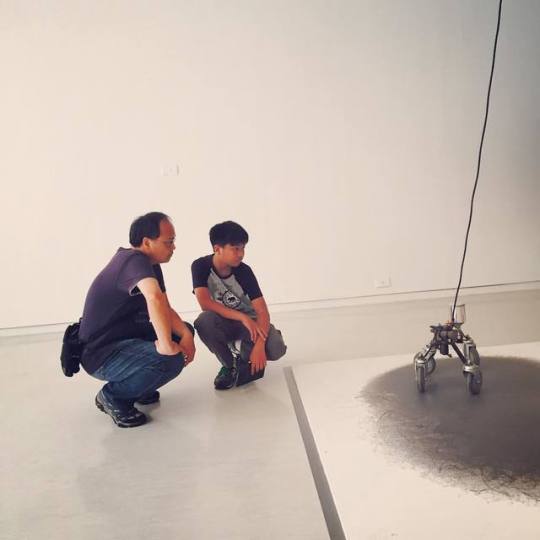
Father n Son, Taipei modern art museum
0 notes
Photo
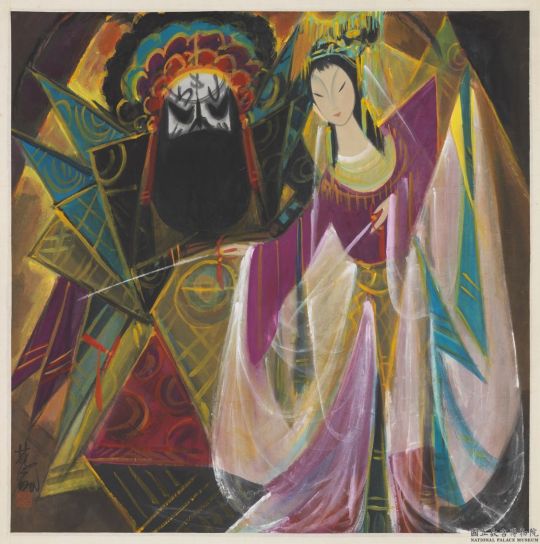
林風眠,《紅顏將軍》,目前由台北故宮博物院典藏。
Lin Fengmian, Beauty and a General, National Palace Museum collection.
Currently on show at She & Her: On Women and Their Art in Chinese History 「她—女性形象與才藝」until 27th Dec.
#lin fengmian#Chinese art#modern art#cubism#picasso#national palace museum#taipei#Beijing opera#Chinese opera#dynamism#abstraction#female beauty
6 notes
·
View notes
Photo

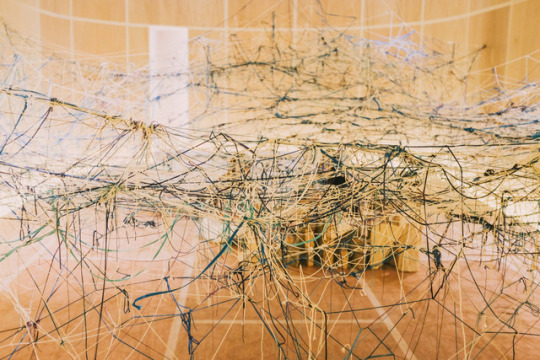
Collaborate art in Fine Arts Museum @ Taipei Everyone adds their own piece of string to contribute to the piece.
#art#collaborative art#process art#fine arts museum#museum#taipei#modern art#contemporary art#taiwan#asia travel#asia travel diary#museums#modern arts museum#string art
19 notes
·
View notes
Photo
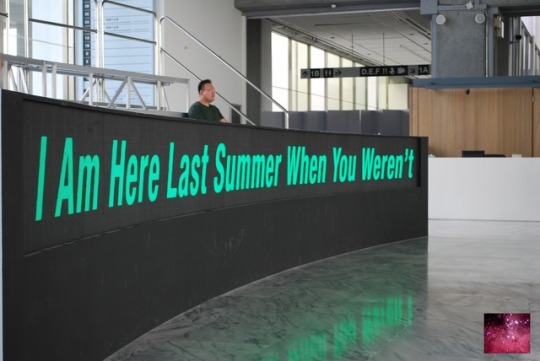
The Lone Wait @ Taipei, Taiwan
1 note
·
View note